







| Heliophanus cupreus (Walckenaer, 1802) |








|
|
Scientific name: Heliophanus cupreus (Walckenaer, 1802) Common name: Other names: Other scientific name: Heliophanus tricinctus. French name: Order: Araneae Family: Salticidae Size: 5 to 6 mm for females, 3.5 to 4 mm for males Biotope: Low growing vegetation, under stones. Damp or dry habitats. Web: No web. Spiders of the Salticidae family chase by looking at preys with their big size eyes. They move by jumping. Observation period: Spring and summer. Geographic area: Europe, North Africa, Asia. |
Heliophanus cupreus is a very small jumping spider. It is rather shiny black in colour with metallic sheen. The legs are pale brown or yellow. The pedipalps are yellowish. Concerning females, the cephalothorax is crossed by a white line. The abdomen shows a curved white line on the fore edge and sometimes additional white markings. These markings on the upper posterior part of the abdomen, are one or two pairs of white dots and sometimes they form a curved line. There are black lines along both sides of the femora and the tibiae of the four pairs of legs. The pedipalps are yellow. Males do not have white markings. Their cephalothorax is more disc-shaped. The tibiae, tarsi and metatarsi are yellow brown. The other parts of the legs are black. The palps have a single femoral apophysis. Heliophanus flavipes only shows black marks on femora 3 and 4. It is only found in very dry habitat. The male's palps have a bifid femoral apophysis. |
| [To know more about the Heliophanus cupreus] [Next picture] [Top] |
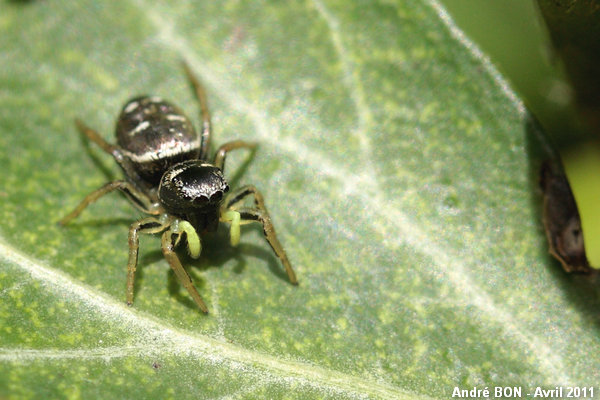
|
The black stripes on the femora and tibiae are clearly visible on this picture. |
| [To know more about the Heliophanus cupreus] [Next picture] [Previous picture] [Top] |
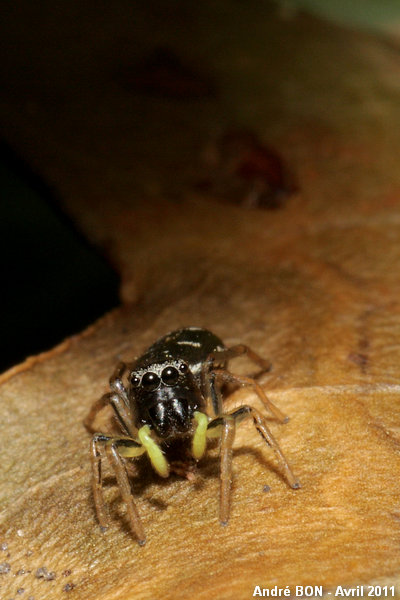
|
It seems to me that the legs are taking a similar colour than the support on which the spider is. Are they a little transparent? |
| [To know more about the Heliophanus cupreus] [Next picture] [Previous picture] [Top] |
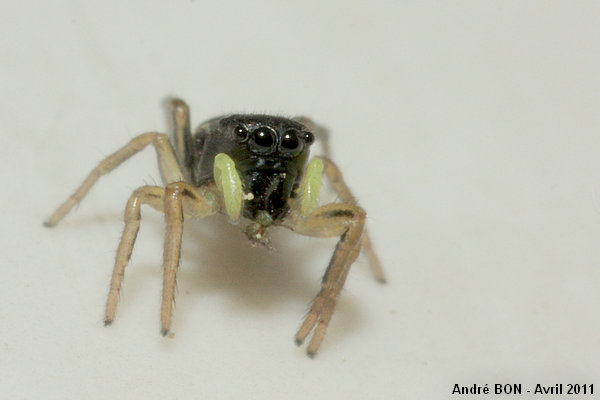
|
I have observed this Heliophanus cupreus on the garden table. It seems that it will have Springtail at today's lunch menu. |
| [To know more about the Heliophanus cupreus] [Next picture] [Previous picture] [Top] |
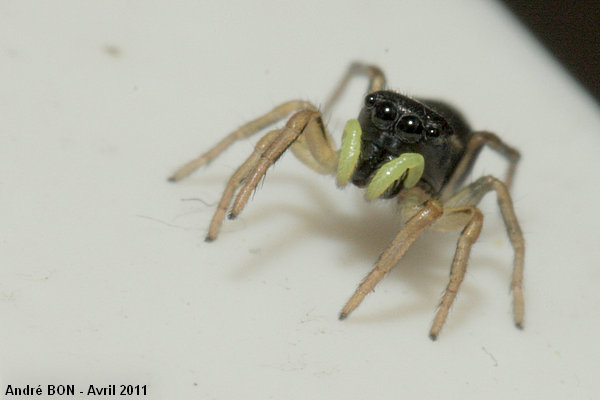
|
Flash and extender tubes are necessary to take pictures of so small spiders. However these pictures are cropped. The game was to shoot a front view with the exact focus on the eyes. |
| [To know more about the Heliophanus cupreus] [Next picture] [Previous picture] [Top] |
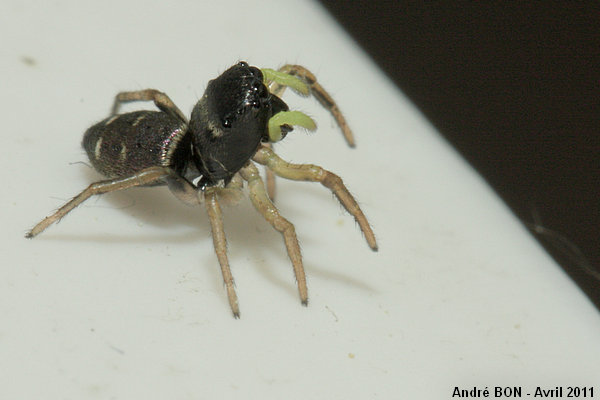
|
I have spent several minutes annoying this small spider to take pictures. I guess that this position means that's enough. |
| [To know more about the Heliophanus cupreus] [Next picture] [Previous picture] [Top] |
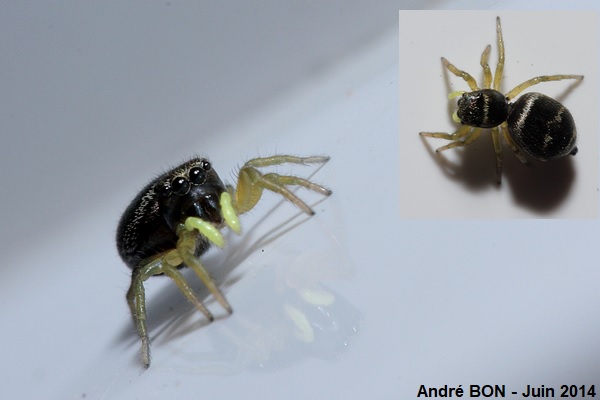
|
The general habitus and the yellow pedipalps are the key here to identify the Heliophanus genus with a good level of confidence. This may be Heliophanus cupreus but it is lacking the black stripes on the legs. I have read that this particularity is sometimes missing. So I have just listed this one as Heliophanus sp. |
| [To know more about the Heliophanus cupreus] [Next picture] [Previous picture] [Top] |

|
I observed this juvenile Heliophanus at work, on my desk. Having my camera with me I shown to my colleagues how to shoot pictures of these tiny subjects. I am not able to identify the species, so I can only tell the genus. |
| [To know more about the Heliophanus cupreus] [Previous picture] [Top] |

|
This top view also allows you to clearly see the black stripes on the legs. |